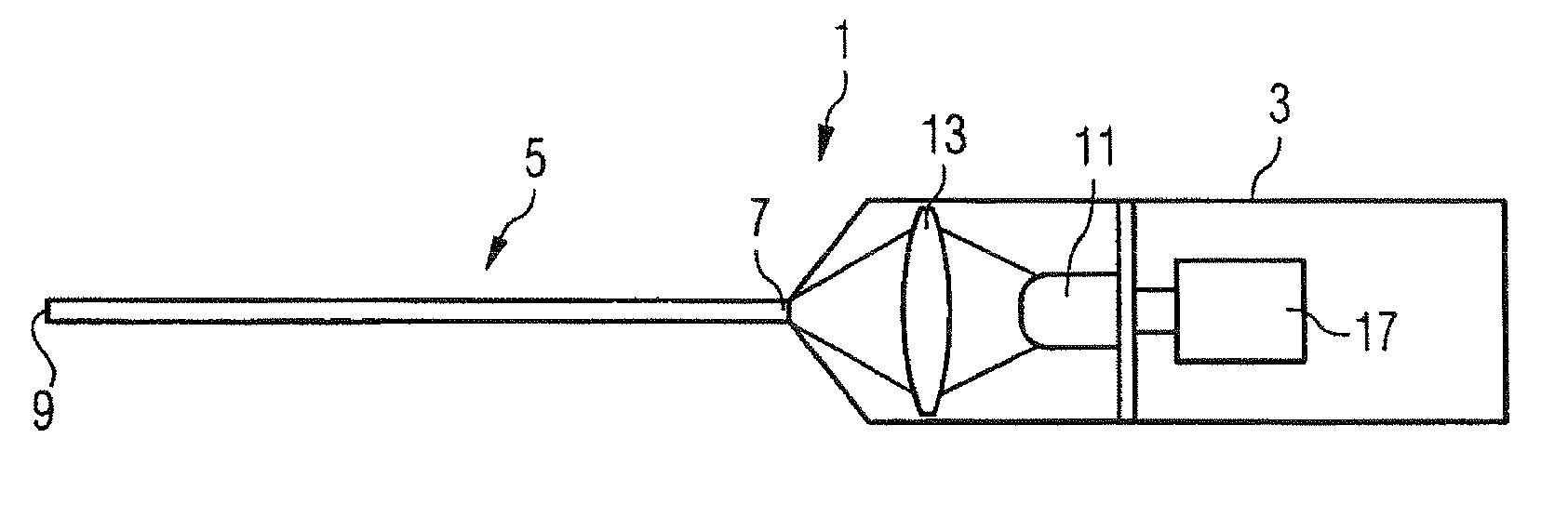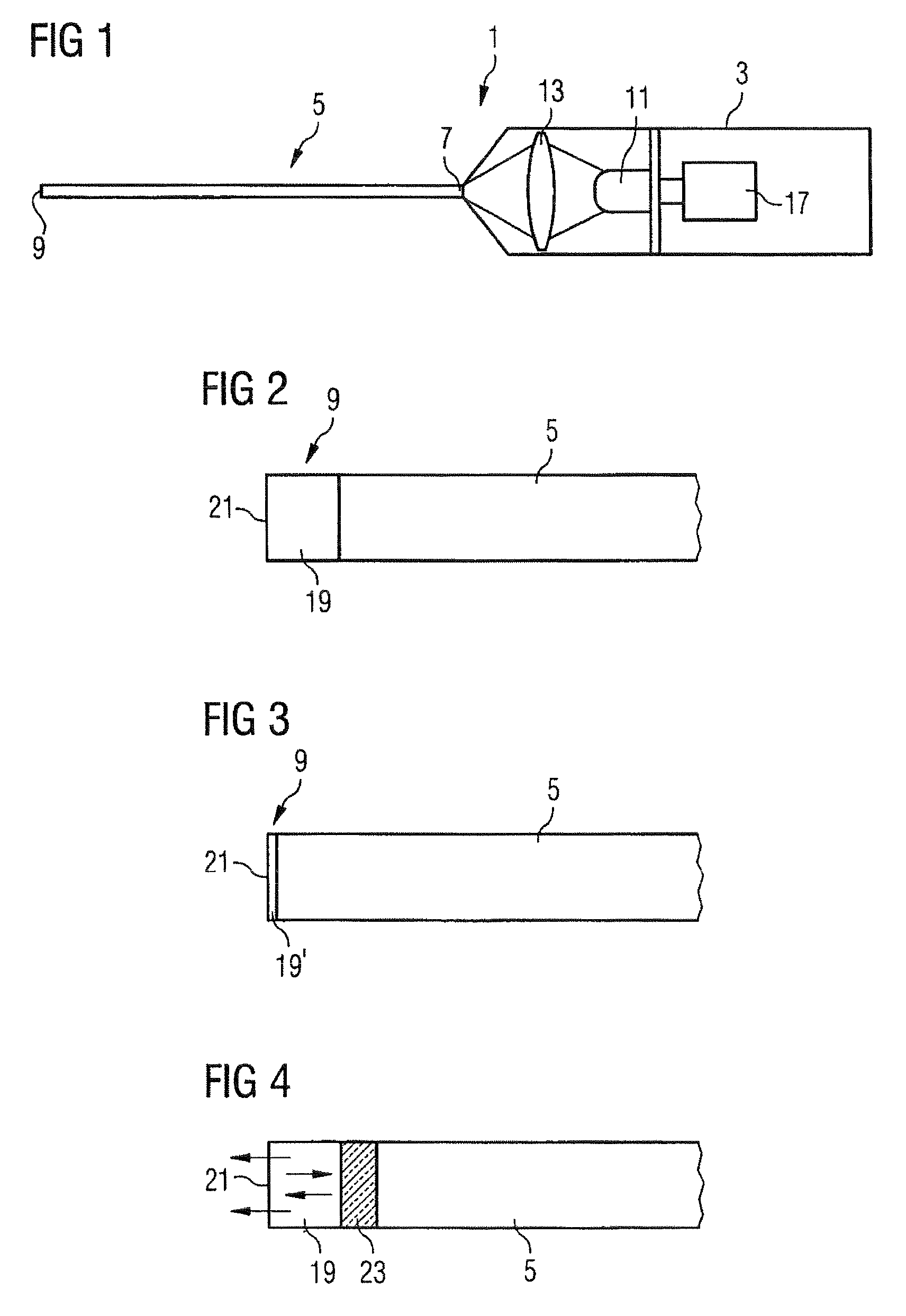Secondary light source
a technology of secondary light source and light source, which is applied in the field of secondary light source, can solve the problems of poor efficiency, generating relatively high losses in the form of waste heat, and difficulty in coupling light into thin optical waveguides, so as to increase the efficiency of secondary light source and increase conversion efficiency. the effect of the distal end
- Summary
- Abstract
- Description
- Claims
- Application Information
AI Technical Summary
Benefits of technology
Problems solved by technology
Method used
Image
Examples
Embodiment Construction
[0034]FIG. 1 shows an endoilluminator 1 in a highly schematic illustration as an exemplary embodiment of a medical illumination device comprising a secondary light source according to the invention. The endoilluminator 1 comprises a handle 3 and a glass fiber rod 5. The glass fiber rod 5 serves as an optical fiber having a proximal end 7, into which is coupled light from a primary light source 11 arranged in the interior of the handle 3, and a distal end 9, to which the light coupled in is guided and from which said light emerges.
[0035]In the present exemplary embodiment, the glass fiber rod is embodied as a monomode fiber. The diameter of the glass fiber rod is therefore very small (8-10 μm), such that it can be inserted through just small openings into the body, whereby trauma can be minimized.
[0036]Although not explicitly illustrated in the figures, the glass fiber rod 5 is surrounded by a sheath, which can likewise be thin. The latter additionally can be surrounded by a protecti...
PUM
 Login to View More
Login to View More Abstract
Description
Claims
Application Information
 Login to View More
Login to View More - R&D
- Intellectual Property
- Life Sciences
- Materials
- Tech Scout
- Unparalleled Data Quality
- Higher Quality Content
- 60% Fewer Hallucinations
Browse by: Latest US Patents, China's latest patents, Technical Efficacy Thesaurus, Application Domain, Technology Topic, Popular Technical Reports.
© 2025 PatSnap. All rights reserved.Legal|Privacy policy|Modern Slavery Act Transparency Statement|Sitemap|About US| Contact US: help@patsnap.com



